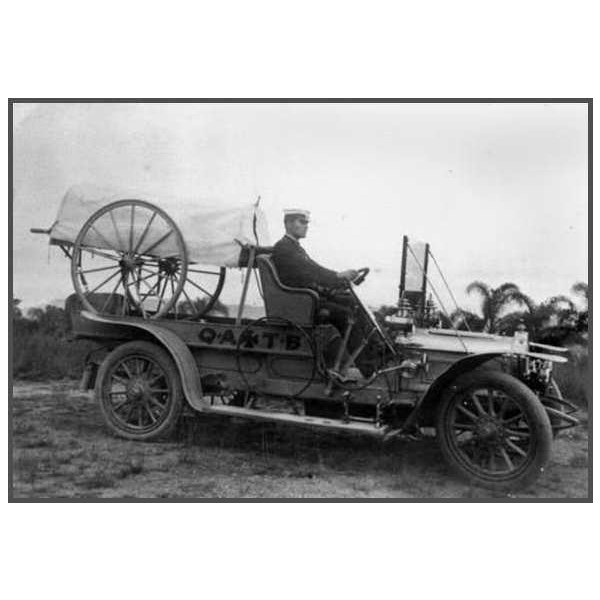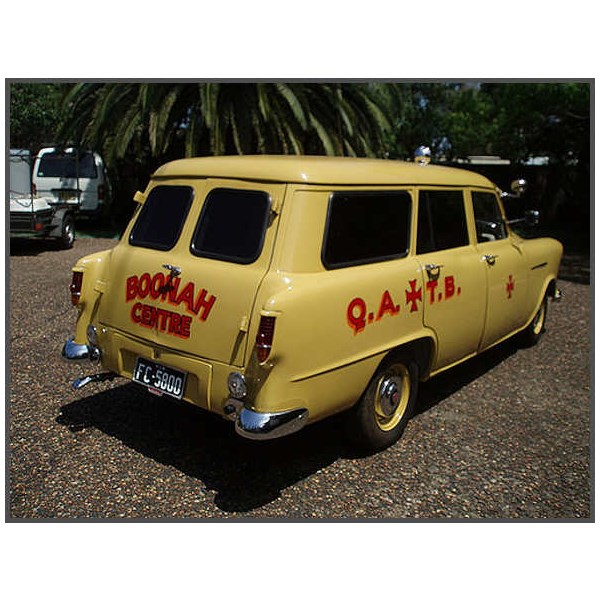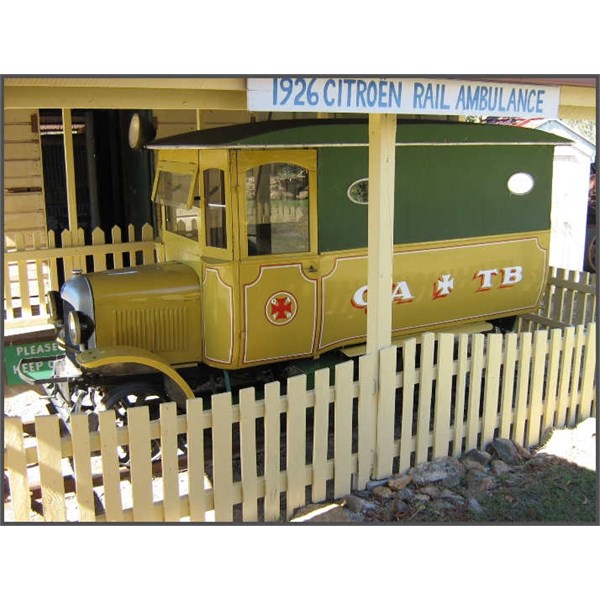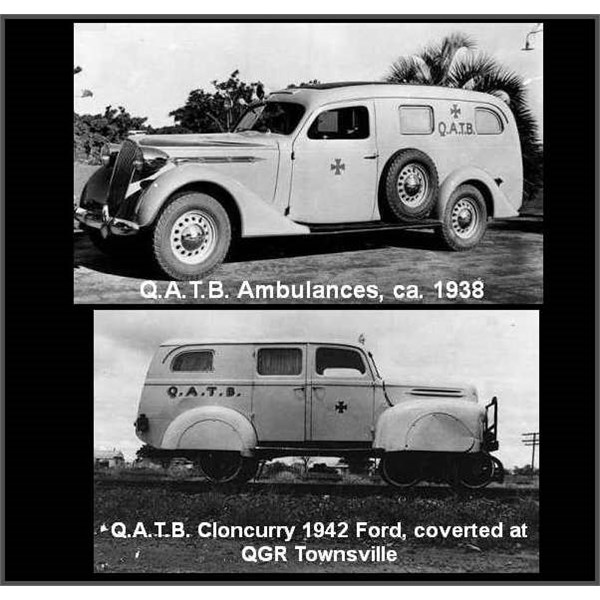The Queensland Ambulance Transport Brigade began in
Brisbane in 1892. It was formed by
Seymour Warrian of the Army Medical Corps after seeing an accident victim suffer considerable aggravation of his injuries through inexpert transport to hospital. The Brigade aimed to provide
first aid and skilled transport to hospital for the sick and injured. In the first years the Brigade was wholly funded by subscription, but met such an important need that from 1895 they were subsidised by the government, both directly and by involving the Department of Works in the construction of ambulance buildings. In the late 1890s and 1900s they expanded into regional centres. By 1921, a specific layout for ambulance buildings had been formalised into policy. This incorporated a space for vehicles with easy street access, a casualty room, meeting room and sleeping room for ambulance bearers on a ground floor level and residential quarters for the Superintendent above.

60 Years Celebrations

Horse-drawn ambulance in front of the Q.A.T.B. Hospital in Ipswich 1908

Q.A.T.B. Ambulance
A
Longreach branch of the Queensland Ambulance Transport Brigade was formed on 24 June 1919. A modified Buick car was purchased from
Brisbane, and the ambulance began operations from the
Commercial Hotel, before moving to premises in Galah Street, and then Crane Street. In 1920, the Ambulance Brigade committee petitioned the State Government for a dedicated reserve for ambulance offices at
Longreach, and this was granted at 111 Ibis Street. After a year of highly successful fundraising, the committee was able to commission the construction of a purpose-designed ambulance building. Plans were submitted by Mr G Meacham and the Brigade superintendent, Mr Archibald Solway, and the contract let in 1921 to Messrs Edwards, Martin Ltd of
Longreach, with a price of £3,185. The building was opened free of debt in May 1921, by the
Longreach Shire Chairman, Mr RH Edkins.
The new building was a two-storeyed timber structure, following the now standard layout for QATB centres. The ground floor contained the casualty room, office, store, and accommodation for the Bearer - which comprised 2 bedrooms, an enclosed verandah which served as the living room, kitchen and
toilet, shower and bathroom - and a cement floored area for housing the ambulance vehicles. On the upper floor was the Superintendent's quarters, comprising 3 bedrooms, a study, kitchen, bathroom, shower and
toilet and a large verandah, where all meals were taken.

Charleville Rail Ambulance,on a 1920s Standard Chassis Now fully restored

1958 Holden FC ambulance, Boonah

Q.A.T.B. Beaudesert
The Ambulance Service was transferred to the
Longreach Hospital in 1958, after which the upper floor of the ambulance station was occupied for some years as a residence, but the ground floor remained vacant. The building began to fall into disrepair and in 1971,
Longreach citizens formed an Arts and Craft group and petitioned to make use of the disused ambulance building. In 1973, the ambulance reserve was transferred from the Health Department to local trustees as a Reserve for Cultural Purposes and the
Longreach Cultural Association undertook to restore the former ambulance building as an arts and crafts centre. Assistance came from local Rotarians and from State and Federal governments in the form of grants for restoration work and various Arts grants.
The building now functions as an Arts and Crafts Centre and accommodates various art and craft classes, an
art gallery, potters' workshop, Flying Arts activities, a theatre group, and community group meetings. The upper level currently comprises the Gallery, a flat rented on a semi-permanent basis, a Tutor's Room for visiting arts tutors, a store room, a craft display room, and a QATB memorabilia room. The Gallery was officially opened in November 1979.

(QATB) building Longreach

1934 Hudson Terraplane ambulance
The former QATB centre demonstrates the way in which the Queensland Ambulance Transport Brigade spread through Queensland and the importance of
Longreach as a regional centre
Criterion D It is a good example of a regional QATB centre which uses the standard ambulance station plan comprising garage space, casualty room and bearer's room on the ground floor and accommodation for a superintendent above.
Criterion E The former ambulance station, due to its prominent position in the main street of
Longreach and its use of scale, form and materials, makes a major contribution to the townscape and is a
well designed and proportioned building adapting a vernacular style
well suited to the climate.
Criterion G The building has a strong association with the people of the
Longreach area as a community facility and with the work of the Queensland Ambulance Transport Brigade.
The former Queensland Ambulance Transport Brigade centre in
Longreach is a two storey timber building purpose built for the Brigade in 1921 and in use as an Arts and Crafts centre since 1973.

1926 Citroen Rail Ambulance b
The Motor Rail Ambulance , first based at
Dalby Ambulance Brigade in 1926 was a 1926 Citroen with a 10hp petrol engine was modified by the Central Motor Garage in
Toowoomba and was co-operated by Queensland Government Railways and Queensland Ambulance Transport Brigade to provide experienced staff and rail access for this life saving vehicle, when it was 60 or more
miles to the nearest hospital with dirt roads impassable in the wet many lives would have been saved by this Motor Rail Ambulance during the first half of the last century,
In 1946 the Vehicle went under control of of the
Mareeba District Q.A.T.B. and saw service at Mt Mulligan and Almaden, it is now at the
Herberton Historic Village and the Citroen engine is in full working order.
It had a chain drive on the left side and wooden brake blocks on the front and rear wheels. There was a storage space under the stretcher that housed a collapsible turntableto allow the Ambulance to be turned around on the rails for the return trip

2 Q.A.T.B. Ambulances
For twenty years,
Cloncurry had no rail ambulance, until in 1954 a 1938 Ford V8 road ambulance was converted to rails at teh QR
Townsville workshops. The rear axle was shortened and fitted with 21 inches (533mm) diameter wheels, while the front was mounted on a four wheel bogie from a QR 45hp AEC rail motor. A jacking point was placed at the centre of balance, to place the car on the rails or turn it at its destination, a hydraulic jack raised and turned as desired, and lowered again. Such operation took about 15 mins, and could be performed by one man, although it was desirable to have two to maintain balance.
In 1962, the speed limit for this car on straight track was raised to 30mph (48kmph) and in 1964, the shed housing it was moved to reduce preparation time. The car recieved regular use during the sixties. In 1963, three trips were made in one weekend, and in 1969, a birth occurred in it between Malbon and
Cloncurry. It was last used in 1971. In 1979 tenders were called for its purchase, but it remained in
Cloncurry, and is now in an historical park there.
.